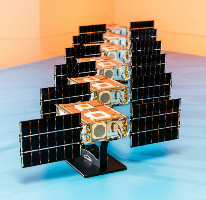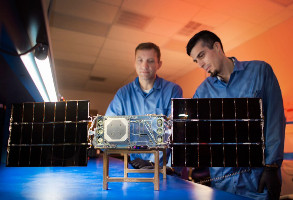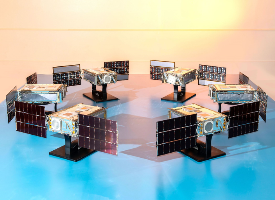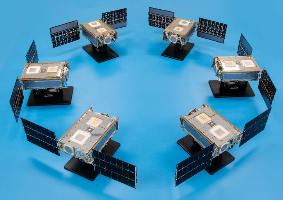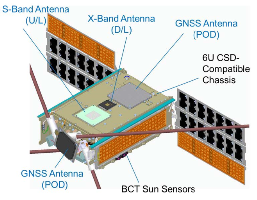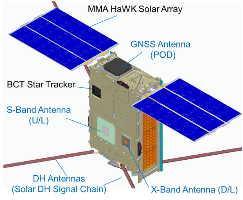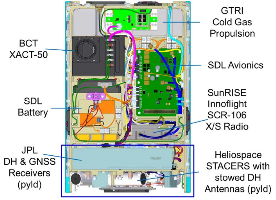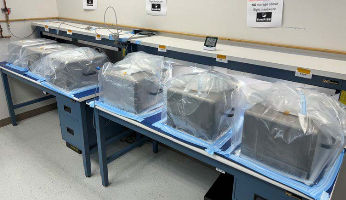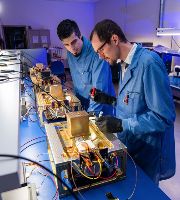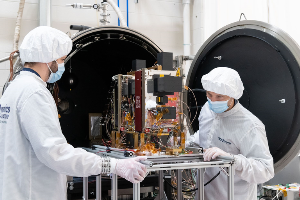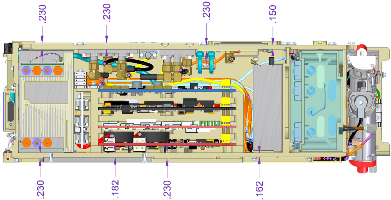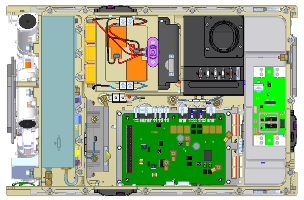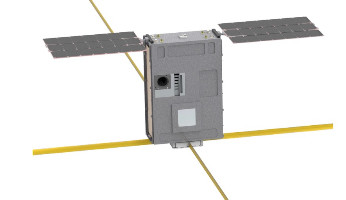| Satellite name | SunRISE |
|---|---|
| Form factor | CubeSat |
| Units or mass | 6U |
| Organization | NASA Jet Propulsion Laboratory |
| Institution | Space agency |
| Entity | Government (Civil / Military) |
| Headquarters | US |
| Manufacturer | AIVT by Utah State University Space Dynamics Laboratory |
| Launch brokerer | Maxar |
| Costs | $62.6 million to design, build, and launch the SunRISE mission. |
| Oneliner |
Study how the Sun creates and releases Giant Solar Particle Storms in GEO orbit. |
| Description |
Deploy the 6 CubeSats in a Geosynchronous earth orbit (GEO). It will then be stationed about 10 Kilometers apart. Then it will be placed in a passive formation and will drift in the GEO. Once it is in operation it will be operated by JPL for a 12-month mission. The CubeSats will be used as one very large radio telescope and will use radio images of low-frequency emission from solar activity. They will then send down the information via the Deep Space Network. Together they will be able to create a 3D map to pinpoint the location a giant particle burst originated on the sun, then how it evolved as they expanded heading into space. The CubeSats will also be used, for the first time, to map the pattern of magnetic field lines reaching the from the Sun to interplanetary space. The mission will study also apart of the sun’s spectrum that can’t be seen on earth due to the ionosphere. It will also help provide information that Parker Solar Probe, Solar Orbiter, and the ground-based Solar Telescope can’t get. The CubeSats will use a DH-GNSS receiver, GNSS antennas, and deployable dipole antennas. Studying solar storms can allow scientists to predict how and when they form, data that can later be used to help better protect astronauts from dangerous solar radiation. It can help protect the spacecraft in orbit from damaging its internals from solar radiation. |
| Sources | [1] [2] [3] [4] [5] [6] [7] [8] [9] |
| Photo sources | [1] [2] [3] [4] [5] [6] |
| Keywords | GTO or GEO orbit, Steerable Solar Arrays, Propulsion |
Related Spacecraft
| Spacecraft | Status | Launcher | Date | Orbit |
|---|---|---|---|---|
| SunRISE 1 (Sun Radio Interferometer Space Experiment) | not launched (ready and waiting for Vulcan launch) | Vulcan | 2025-05-29 | GEO |
| SunRISE 2 (Sun Radio Interferometer Space Experiment) | not launched (ready and waiting for Vulcan launch) | Vulcan | 2025-05-29 | GEO |
| SunRISE 3 (Sun Radio Interferometer Space Experiment) | not launched (ready and waiting for Vulcan launch) | Vulcan | 2025-05-29 | GEO |
| SunRISE 4 (Sun Radio Interferometer Space Experiment) | not launched (ready and waiting for Vulcan launch) | Vulcan | 2025-05-29 | GEO |
| SunRISE 5 (Sun Radio Interferometer Space Experiment) | not launched (ready and waiting for Vulcan launch) | Vulcan | 2025-05-29 | GEO |
| SunRISE 6 (Sun Radio Interferometer Space Experiment) | not launched (ready and waiting for Vulcan launch) | Vulcan | 2025-05-29 | GEO |
Last modified: 2025-04-18
